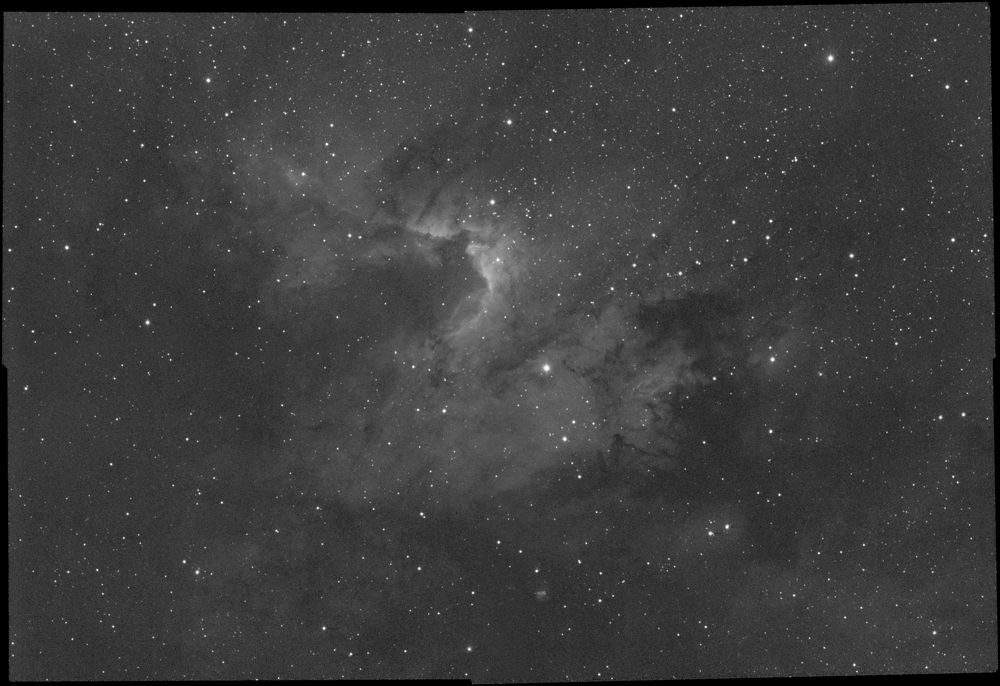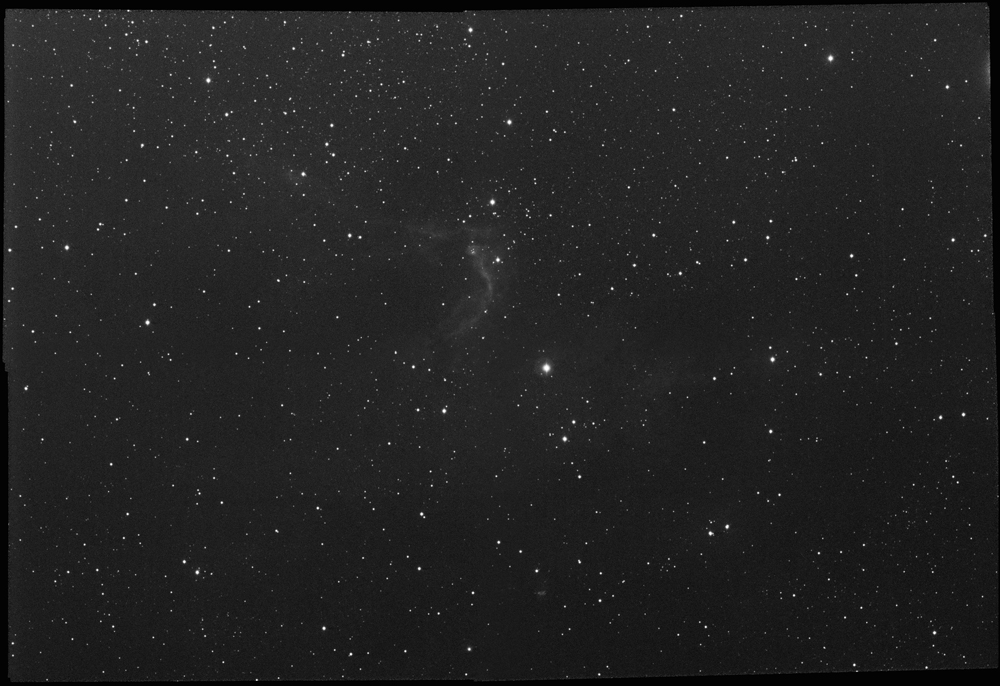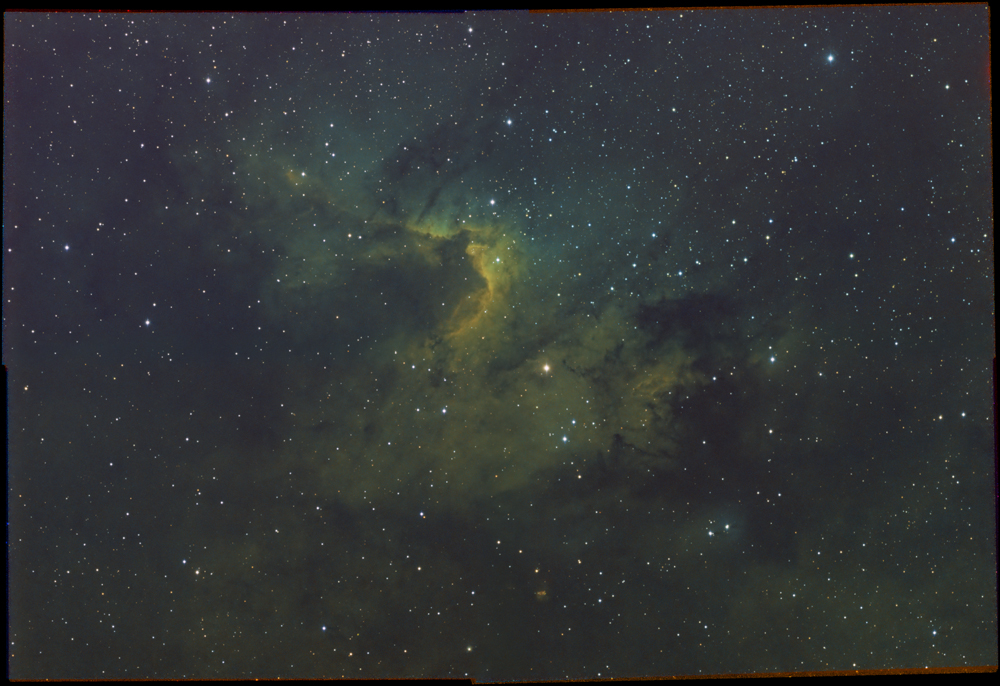© 2022 Michael A. Siniscalchi
SH2-155
Diffuse Nebula in Cepheus
RA:22h 56m 47s Dec: +62 36' 59" Distance - ~2,707 ly Size 50'x30'
Wikipedia-
Sh2-155 (also designated Caldwell 9, Sharpless 155 or S155) is a diffuse nebula in the constellation Cepheus, within a larger nebula complex containing emission, reflection, and dark nebulosity. It is widely known as the Cave Nebula, though that name was applied earlier to Ced 201, a different nebula in Cepheus. Sh2-155 is an ionized H II region with ongoing star formation activity, at an estimated distance of 725 parsecs (2400 light-years) from Earth.
Sh2-155 was first noted as a galactic emission nebula in 1959 in the extended second edition of the Sharpless catalogue, being a part of the much larger Cep OB3 Association. Although Sh2-155 is relatively faint for amateur observation, some of its structure may be seen visually through a moderately sized telescope under dark skies.
Sh2-155 lies at the edge of the Cepheus B cloud (part of the Cepheus molecular cloud), and is ionized by young stars from the Cep OB3 association. It has been suggested that radiation from the hot O-type star HD 217086 is compressing the region, triggering the formation of a new generation of stars. A study of the region's young stellar objects by the Chandra X-ray Observatory and Spitzer Space Telescope shows a progression of stellar ages in front of the cloud, supporting the hypothesis of triggered star-formation.
Click on image for half size
SH2-155 position shown relative to our location (Sun) in the Milky Way Galaxy
Galatic Longitude: 110.2
Galatic Latitude: 2.6
Distance from Galatic Plane:180 ly above the galatic plane
Above image and info provided by Our Galaxy 3D Atlas application and used with permission by
Otherwise
Initial stretch of 1 1/2 hours for each of the 4 panels Hydrogen (Ha) data
Initial stretch of 1 1/2 hours for each of the 4 panels Sulphur (SII) data
Initial stretch of 2 hours for each of the 4 panels Oxygenn (OIII) data
Initial combine of Ha SII & OIII frames using the HST palette in Astro Pixel Processor. This was then imported into Photoshop for additional processing.





